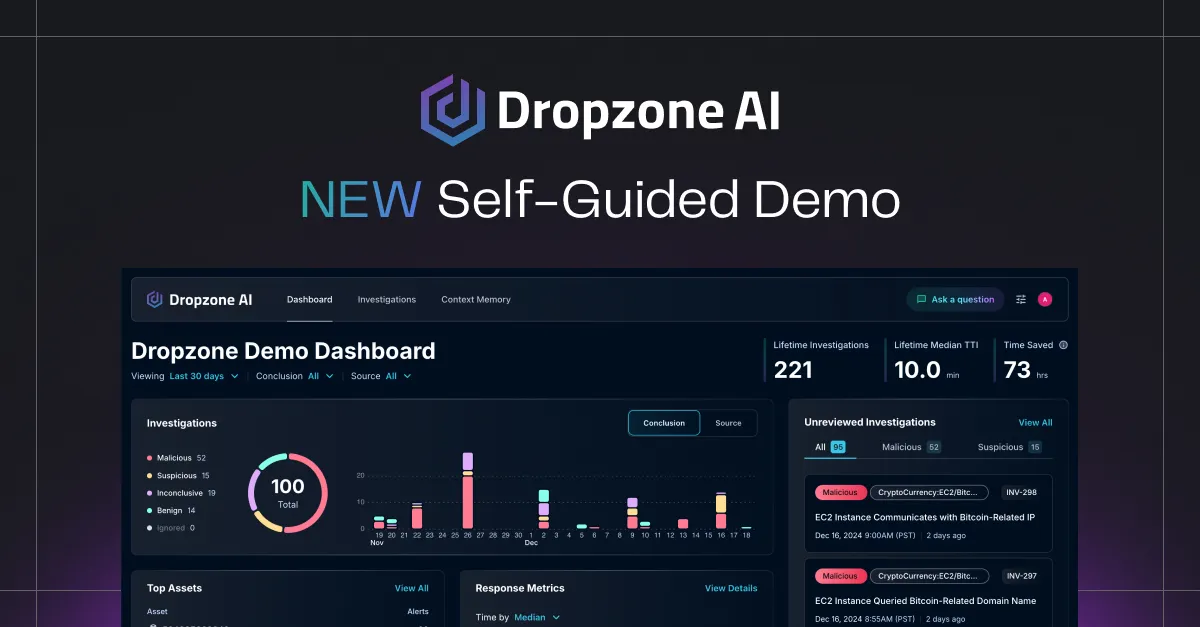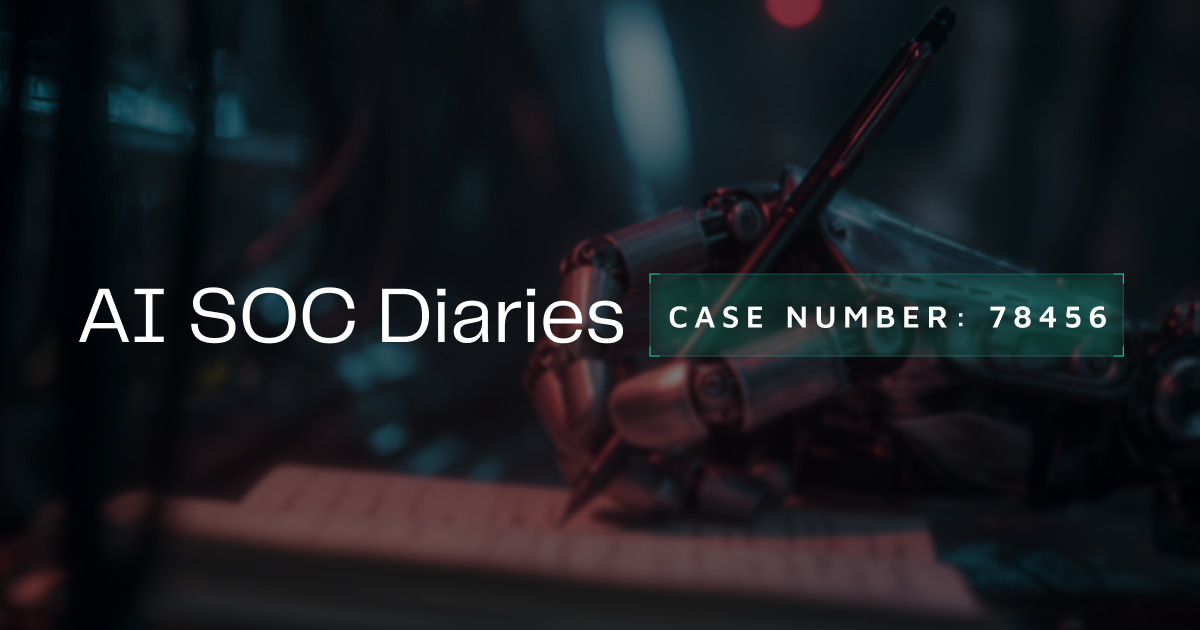Executive Summary
Agentic AI addresses six critical SOC challenges through autonomous investigation capabilities. According to Dropzone AI, AI SOC agents reduce alert investigation time by 90% (from 40 minutes to 3-10 minutes), provide 24/7 autonomous coverage, and handle 100% of Tier 1 alerts without human intervention. This technology is particularly well-suited for tedious but critical tasks like Tier 1 alert triage and investigation, working autonomously while maintaining a human in the loop for review. By bridging the cybersecurity skills gap, reducing false positive rates, and integrating seamlessly with existing security tools, agentic AI fundamentally transforms SOC operations.
Security Operations Centers (SOCs) detect, analyze, and respond to security threats around the clock. While detecting cyberattacks is challenging enough on its own, the multitude of alerts coming into the SOC highlights the need for greater efficiency and productivity. These SOC challenges are not unique to any organization but universal across industries. In this blog, we'll explore six of the most common efficiency and productivity challenges SOCs face and how modern technologies, particularly AI SOC agents, can help overcome these obstacles and enhance SOC capabilities.
By the Numbers: SOC Challenges & AI Impact
Key Statistics:
- 10,000+ daily security alerts faced by average SOC (Source: Dropzone AI Research)
- 90% reduction in Mean Time to Conclusion (MTTC) with AI SOC agents
- 67% of SOC time wasted on false positives
- 24/7 autonomous coverage without human fatigue
- 3-10 minutes average AI investigation time vs. 20-40 minutes manual
- 100% of Tier 1 alerts can be automated with agentic AI
See these metrics in action with our 15-minute self-guided demo →
1. Alert Overload
The Challenge: SOC analysts are bombarded with an overwhelming number of security alerts every day. As organizations grow, their digital infrastructure expands, generating an increasing number of data points and security alerts. While not every alert signals a genuine threat, analysts must sift through each one, leading to alert fatigue. Over time, this can cause serious issues, such as missed critical threats and delayed response times.
How Agentic AI Helps: AI SOC agents can process vast numbers of alerts in near real-time, investigating each one to identify false positives and highlighting the alerts that require immediate attention. Instead of manually combing through thousands of alerts themselves, human SOC analysts can focus on genuine threats, improving overall efficiency and reducing the likelihood of missed attacks. By automating much of the data triage process, AI gives SOC teams the breathing room they need to stay focused on the most pressing issues.
2. Maintaining 24/7 Vigilance
The Challenge: Cyber threats don't adhere to a 9-to-5 schedule, which means SOCs must maintain round-the-clock vigilance to detect and respond to incidents at any time. However, keeping a team of human analysts on duty 24/7 is both costly and challenging, leading to fatigue, burnout, and missed alerts.
How Agentic AI Helps: AI-powered systems provide continuous, real-time monitoring without the need for breaks or downtime. By automating the monitoring process, AI ensures that SOCs have 24/7 coverage, regardless of staff availability. This constant vigilance allows organizations to detect and respond to threats at any time, reducing the risk of overnight or off-hours attacks. Additionally, AI can handle much of the heavy lifting during off-hours, allowing human analysts to focus on more strategic tasks when they're on duty.
3. Slow Response Times
The Challenge: Time is of the essence in cybersecurity. The longer a threat goes undetected or unresolved, the more damage it can cause. Traditional SOCs often struggle with slow response times due to manual threat investigations and resource constraints. When dealing with sophisticated attacks that move quickly through systems, these delays can lead to costly breaches.
How Agentic AI Helps: AI SOC analysts drastically reduce the time it takes to respond to threats. By automating the initial stages of threat investigation, AI SOC analysts can identify potential risks in real time and even suggest or implement remediation measures. This immediate response capability allows SOC teams to act quickly, preventing minor incidents from escalating into major breaches. SOCs using AI can shorten their mean time to conclusion (MTTC) and mean time to respond (MTTR), giving them an edge in staying ahead of attackers.
4. Skills Shortage
The Challenge: The cybersecurity skills shortage is a well-known issue, with demand for skilled SOC analysts far outpacing the available workforce. This shortage leaves many SOCs understaffed and overworked, which can lead to analyst burnout and high turnover rates. Without enough skilled personnel, SOCs struggle to keep up with the volume of work.
How Agentic AI Helps: An AI SOC agent is pre-trained to use common tools expertly, helping bridge the skills gap by automating many of the routine and time-consuming tasks that would otherwise require skilled analysts. This allows SOCs to make the most of their existing workforce, enabling analysts to focus on more strategic and complex security challenges. AI also enhances the capabilities of junior staff so that they can drive investigations further on their own, alleviating some pressure on senior analysts.
5. False Positives
The Challenge: False positives are one of the biggest time-wasters for SOC analysts. Traditional threat detection methods often generate large numbers of false positives—alerts that appear to indicate a threat but turn out to be benign. SOC teams can spend hours investigating these false alarms, diverting resources away from real threats and reducing overall efficiency.
How Agentic AI Helps: AI-driven systems do not become fatigued, but are able to continuously weed out false positives from the alert queue so that the SOC team can focus on the legitimate issues that require human intelligence. In this way, AI SOC agents can reduce the number of false positives that human SOC teams have to deal with. This means analysts can focus their attention where it matters most, improving both the speed and accuracy of threat detection.
6. Lack of Integration Across Security Tools
The Challenge: Many SOCs use a patchwork of security tools, each designed to address different aspects of cybersecurity. The lack of integration between them can create data silos, complicating the threat detection and response process. This is sometimes called the "swivel chair problem" because users need to manually correlate data from different UIs on different monitors. SOC teams may struggle to respond quickly and effectively without a unified view of security incidents.
How Agentic AI Helps: Agentic AI security solutions integrate seamlessly with existing security tools, such as SIEMs, firewalls, and EDR tools. By pulling data from multiple sources as needed for an investigation just as an expert human analyst would, AI SOC analysts obviate the need for human analysts to have to remember vendor-specific query syntax and other details. This approach helps bridge data silos and improves collaboration between different tools and teams, ensuring a faster, more coordinated response to threats.
AI Helps Overcome SOC Challenges
It's arguably never been a better time to work in a SOC now that technology is available to eliminate the barriers that have been holding SOCs back. AI SOC agents help organizations overcome common obstacles, streamlining operations by mitigating false positives and automating routine tasks to allow the SOC to make the most of existing staff.
By leveraging agentic AI, SOCs do not eliminate staff but optimize existing resources, allowing them to be better prepared for existing and emerging cyber threats.
Dropzone AI can transform your SOC's operations. With advanced AI capabilities, seamless integration with existing tools, and the ability to learn and adapt continuously, Dropzone AI addresses all the challenges facing a SOC and empowers them to stay one step ahead of attackers.
See Dropzone AI in Action
Want to see exactly how AI SOC agents handle these challenges? Experience our autonomous investigations firsthand with our self-guided demo. In just 15-20 minutes, you'll see real Dropzone AI investigations across email security, SIEM, cloud security, and endpoint tools—all from your browser, no installation required.
You can even share it with your security team to explore together. Or if you prefer a personalized walkthrough, schedule a demo with our team to discuss your specific SOC challenges.
.webp)














